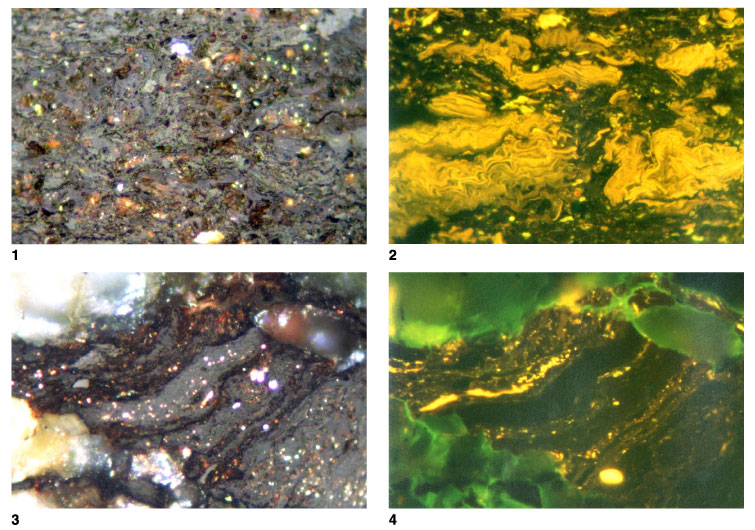
Plate P11.
Coal and coal intraclasts. 1.
T5818; Hole 1109D; 969.89 mbsf. Coal with major vitrinite that appears to
represent structured telovitrinite, but is seen from figure 2 to represent
numerous broken fragments of bark tissues mixed with degraded wood. Small pyrite
framboids indicate some marine influence (reflected light; field width = 0.22
mm; vitrinite reflectance = 0.30%). 2.
T5818; Hole 1109D; 969.89 mbsf. Same as figure 1, but in fluorescence mode.
Strongly fluorescing suberinite seen in various section ranging from parallel
with the surface of the wood to longitudinal section and in cross section. Small
amounts of resinite are present in the groundmass together with liptodetrinite
(reflected light; field width = 0.22 mm; vitrinite reflectance = 0.30%). 3.
T5856; Hole 1116A; 110.93 mbsf. Peat intraclast with thin telovitrinite layers
and resinite. The bedding within the sediment is horizontal. Abundant pyrite is
present. The pyrite deposition could have occurred during the reworking and
deposition within a probable marine setting (reflected light; field width = 0.22
mm; telovitrinite reflectance = 0.42%). 4.
T5856; Hole 1116A; 110.93 mbsf. Same as figure 3, but in fluorescence mode. Peat
intraclast with the intraclast bedding outlined by the laminae rich in resinite.
Smaller amounts of resinite are dispersed within the matrix of the siltstone
(reflected light; field width = 0.22 mm; telovitrinite reflectance = 0.42%).
Click on image or number to see enlargement.



![]()